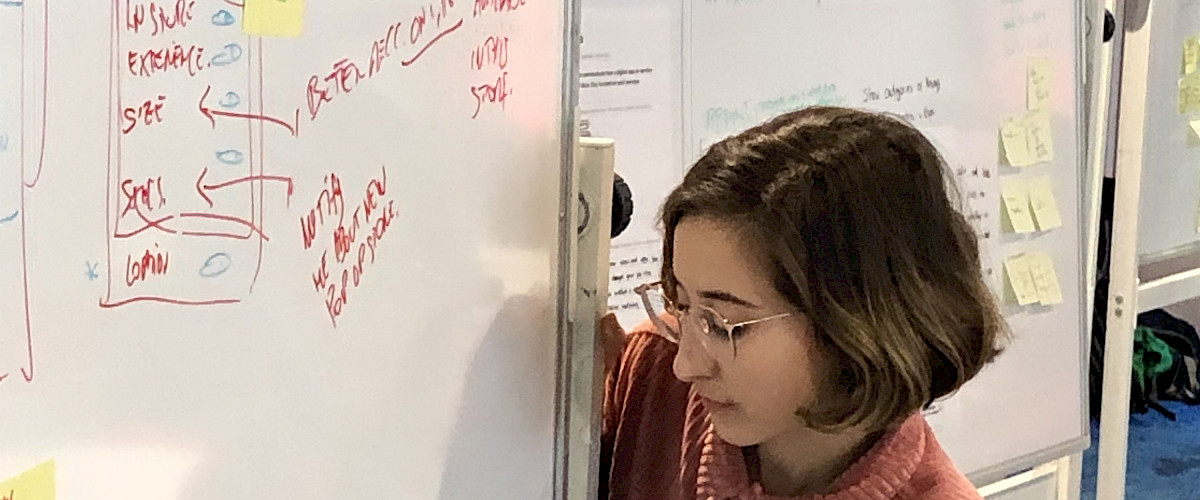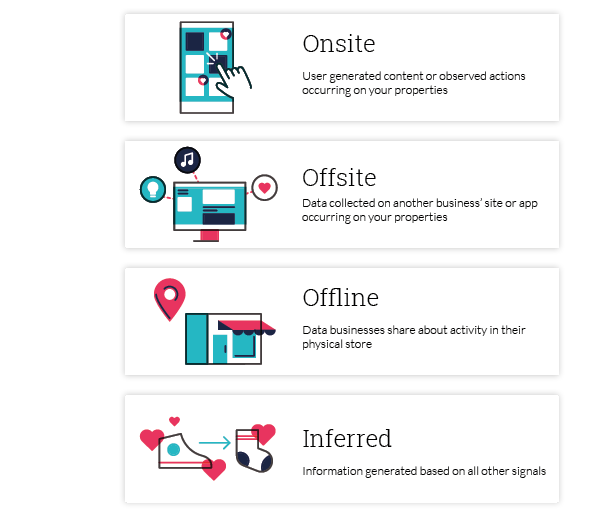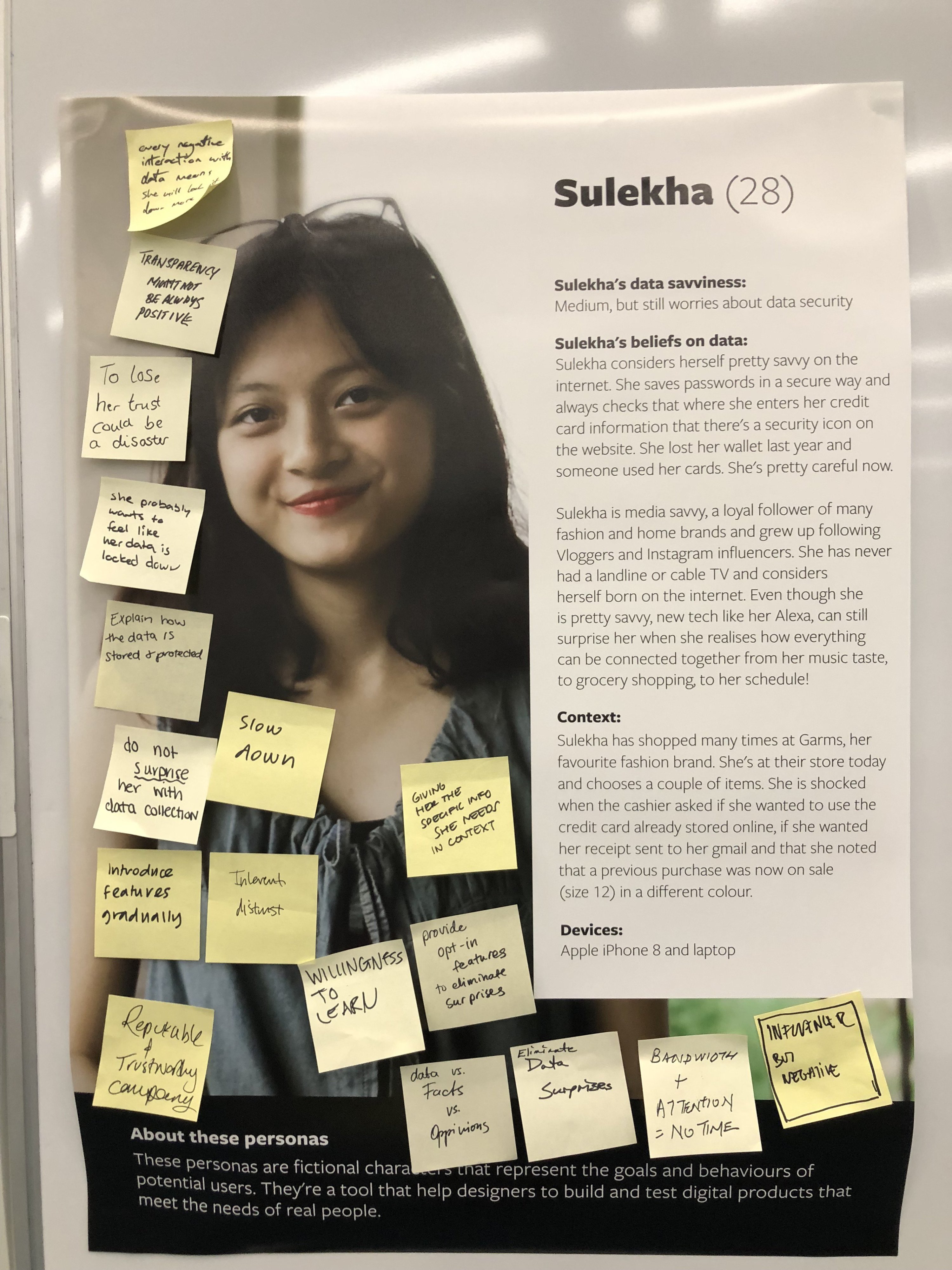Data education for business and audiences
London
22nd Jan 2019 at Facebook

Businesses face increased regulatory and public interest in their data practices and use. While people want more transparency and control around the data that businesses collect, there is also a substantial and understandable educational gap among consumers. Technology has developed quickly, and we can’t expect people to learn all of this overnight. This makes it difficult to effectively communicate data practices and value to people.
The objective of this Design Jam was to develop strategies to help businesses explain how they collect and use data on their own sites and apps, innovating on ways to bring better user understanding to data flows between businesses.
Come up with approaches and best practices for data education and transparency to surface, explain and offer people control over data that businesses collect and use.

We welcomed multiple teams from Facebook as well as industry advertisers, data brokers and agencies, designers, content strategists and members of the policy community.
Below is an outline of the stages and exercises that took place at this Design Jam, which involved the creation of bespoke exercises. For everything that you need to facilitate your own workshop, please follow the links to the relevant part of our toolkit.
Discover
On the morning of the Jam, participants were welcomed and Introduced to Design Jamming. They then took part in discovery exercises: Analyse transparency in context and Understand People.
The group heard from subject matter experts from Facebook who gave short lightning talks on the following areas: breaking down data types and their interrelation; the concepts behind content strategy; building visual narratives; and transparency and control for ads.

All participants worked to Identify opportunities by writing How Might We's on Post-Its during these presentations, and these notes were collected by the facilitation team who placed them on the wall of the day, grouping them into key thematic areas.
During these expert talks, data was categorized into four different types: onsite, offsite, offline and inferred data. The types were based on where and how data is collected, and whether the data is provided directly by a user or if it the data is deduced by other methods. We recognized that there was a lot of nuances to unpack within each data type, and that other types of data were not represented. For the purpose of this Design Jam, we limited our scope of datatypes in order to have a focussed discussion and productive ideation.
Ideate & Prototype
The group was divided into 4 teams and asked to explain data types for a given persona by developing a common language through clear text and visuals to describe the different data types.
The teams were asked to promote their preferred ideas by Dot voting on the descriptions and illustrations that were most effective and novel for each persona and their way of seeing the world. Team members voted with 3 dots each and this created a heat map of words and visuals from which they could develop their ideas in the afternoon.

Next, the teams focussed their idea development on conveying data value for their persona based on possible real-life scenarios where people might experience these data types. The aim of this exercise was to help people understand the value proposition of collecting and/or using different types of data based on TTC Labs fictional apps and the following contexts for each persona:
- Data collected / shared between companies using Acclaim (Offsite Data) Noah, 39, recently read a NY Times article about Acclaim, a data broker, and was curious to see what data they 'had on him!' He was startled by the data collected about his tastes and behaviors from both online and offline sources. He'd like to understand it more, and take control of it, as it feels more extensive than he'd expected.
- Data generated about Malik while using Friendlee (Inferred Data) Malik, 23, just graduated from university with a degree in Marketing. He feels lucky to be able to stay in Chicago to join his first startup. After his first week, and making a few new work friends, he starts seeing recommendations for marketing events and Ads for Marketing Certifications on Friendlee, a social app. How did it know he'd started a new job? He didn't move or make any post about it.
- Data collected offline on the high street & using Garms (Offline Data) Sulekha, 29, has shopped many times using Garms, her favourite fashion store and its app. She's at their physical store today and chooses a couple of items. She is shocked when the cashier asked if she wanted to use the credit card already stored online, if she wanted her receipt sent to her gmail and that she noted that a previous purchase was now on sale (size 12) in a different colour.
- Data collected on a business' own services while using Ayr (Onsite Data) Penny, 62, is motivated to raise money and to be healthier. She was given a fitness tracker for her birthday but she's never used it. She has downloaded the Ayr fitness app to her phone in preparation. Her friends have all signed up for the couch to 5k program and they're determined to motivate each other do their first 5k run. First, Penny needs to get comfortable with how the app uses her data.
Each team had to identify the different data types at play for their service (such as data the service provides directly, inferred and observed data, data shared between companies). Then the teams had to explain their given data type is valuable to the primary persona as well as the other 3 personas, using clear text and visuals to convey the value of the data type to people while identifying tradeoffs.
Teams sketched ideas and received Feedback from other teams. Each team filled out a presentation board to Create a pitch, telling their team's story back to the whole group.
The ideas and findings from the day were then synthesised into a practical report and guide.